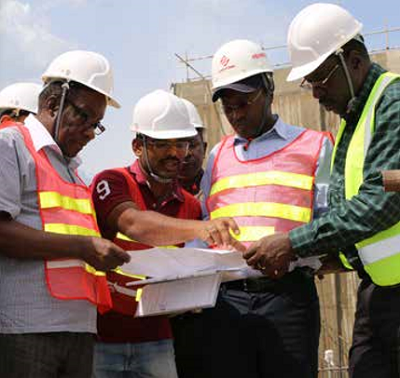
Museveni also replaced Kaliisa with Stephen Isabalija, the former UEGCL board chair, who led the park of those pointing out the mistakes at the Karuma and Isimba dams and in the management of the energy sector generally.
Museveni said he appointed Kiggundu to offer “timely and strategic guidance to project implementation”.
Kiggundu is deputised by John Berry, the former General Manager, Bujagali Electricity Limited. The other members of the committee include the Permanent Secretaries of the Finance and Energy Ministries and the heads of UEGCL and UETCL; and the Solicitor General.
Having been appointed in July to do most of what Kaliisa should have been doing, Kigundu was in November leading his team to Karuma Dam construction site on a fact-finding mission into how far the contractor, the Chinese company Sinohydro, had gone on the cracks amongst other technical issues.
“So have you tested whether it works?” Kigundu turned and asked the engineer who was giving a report about the repairs of the cracks. The engineer did not respond immediately. Instead, it is engineer Harrison Mutikanga, the head of the government’s power generating arm; the Uganda Electricity Generation Company Ltd (UEGCL) who chipped in. “What he is asking is how often you test this material to ensure that it is strong and works,” Mutikanga said.
The engineer said no test had been done ever since the cracks were repaired. Then you need to test regularly, Mutikanga told him. This was high powered inspection. Apart from the two bosses, there were also officials from State House, UEGCL, Sinohydro, the Uganda Electricity Transmission Company Ltd and the Energy Ministry.
Even Francis Atooke, the Solicitor General, was close by, listening so attentively that an official joked that going by his rate of concentration, he would turn into an engineer. The Solicitor General smiled, mumbled something, and went back to his concentration.
From the spillway site, they drove a few metres to the entrance of a huge underground tunnel. It was dark inside and nearly as wide as a three-lane road and as high as a two-storied building and it ran for about 1.4kms. This is the Main Access Tunnel and leads to the inner caverns where the power house and six turbines that will each generate 100 MW of power each (making 600 MW). Along the way Kiggundu’s convoy of about 10 SUVs passed giant earth movers still ferrying mounds of soil out of the tunnel.
The powerhouse is deeper underground and Kiggundu and his team only got a glimpse of its designated position by leaning against a metallic barrier separating it from the main ground. One of the earthmovers was digging up the spot for the sixth turbine. One by one, they asked a young Ugandan engineer in his early 30s working on the project and the Chinese supervisors, questions.
The Chinese contractors had also flown in some members of their team from China. They were mostly high level company executives and hydro power experts, according to Wang Yantao, the Executive Vice President, East and Southern Africa, Sinohydro Corporation. Sinohydro also invited top executives from China Power, which designed the project, among others.
Yantao said at a presser that about 20 experts had come in from China to work on the challenges facing the project, which he said was very unique and important to them (Sinohydro). He also acknowledged that they had had challenges and pledged to work with the government to correct them.
Another official explained that they had checked the cracks, found that they are not deep, are on the spill way and not the power house, which is the heart of the dam. He said they had hired SIKA, a company from Switzerland to repair them. Pressed on whether patching up the cracks would not reduce the dam’s life, the official reassured the meeting that the chemical being used to treat the cracks was even stronger and more durable than the concrete.
These remarks followed a closed meeting in which Kigundu’s team grilled the Chinese contractors. At first the Chinese were reluctant to admit that they had caused the mess and insisted that the meeting focusses on only the way forward but Kigundu’s team pressured them into accepting.
“We have achieved a few things,” one of the officials at the meeting said, “the contractor has admitted that they made mistakes and are now committing to delivering quality work. That is what is important.”
In his remarks, Kiggundu said that given this representation from the highest levels and the commitment from the contractor, the “cracks are going to be fixed.”
****
editor@independent.co.ug
 The Independent Uganda: You get the Truth we Pay the Price
The Independent Uganda: You get the Truth we Pay the Price


